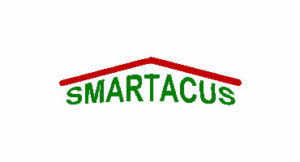 Smart Acoustic House
Smart Acoustic House
Grant agreement ID: BRPR980705
Duration: November 1998 – April 2001
Cordis: https://cordis.europa.eu/project/id/BRPR980705
Description
The project has as main aim to develop active control of sound (ACS) systems to improve the sound climate in buildings by utilizing ElectroMechanical Film (EMF) technology. The main objectives of the project are:
1. Demonstrate a major breakthrough in the development of active control of sound (ACS) systems for buildings.
2. Investigate, design and develop four generic active actuators and combine to traditional building elements.
General information: Objectives and content Quality and comfort of private and public buildings is – to a considerable extent – assessed by the acoustic climate inside the building. Disturbing noise comes through windows, doors and lightweight internal walls with poor sound insulation capacity, especially at low frequencies. Disturbing reverberation and reflections are often present in public buildings with large areas of hard walls and ceilings, but also in private living rooms reverberation and reflections can severely prevent good music listening conditions. The increase of sound insulation of walls, windows and doors is essential in increasing the quality of the acoustic environment. Traditionally this is done by increasing the thickness and weight of walls and door panels, increasing the absorption material inside double leaf partitions and increasing the number of glazing layers of windows. However, these add weight and cost of building elements and make the construction complicated.
The main industrial objective of the research is to demonstrate a major breakthrough in the development of active control of sound (ACS) systems for buildings. They can increase the comfort and reduce the thickness, weight and cost of building elements. This can be achieved by using high efficient flat film actuators as anti-noise sources. The technical innovation, ElectroMechanical Film (EMF) can be used as an acoustic source. The actuators made of EMF are very thin, weigh very little, are mass-producible and thus cheap. They can be placed on all desired places on walls and ceilings and inside double leaf partitions. In existing buildings noise reduction using ACS can be more efficient and extended to higher frequencies. In future buildings light-weight panels on which the EMF actuators are fixed can have acoustic transmission loss as high as the transmission loss of existing high-weight panels. The easy integration of low-cost EMF-actuators in ACS system can make the ASC systems extremely feasible in the control of low frequency noise in buildings. The main drawback with older ANC systems have been that they have not been compatible with mass-production and the price of the systems have been high.
The technical objectives of the research are to investigate, design and develop four generic active actuators and combine them to traditional building elements to form three prototypes. The first prototype is an active absorbing EMF element combined to a traditional thin passive absorbing element. With this kind of combined active/passive elements the absorption coefficient of thin layers at low frequencies can be as high as of very thick and heavy passive materials. Furthermore, with active elements we can change absorption coefficient electrically and create even delay effects for optimising the acoustic environment for comfort. The second prototype is a light-weight active sound insulating panel based on EMF-technology. It can be utilised for the sound insulation increase of nontransparent boundaries, such as doors and light-weight internal walls. The sound insulation increase using active elements is expected to be several (even tens) of decibels at low frequencies without excessive addition of weight. The third prototype is the most ingenious one, because it will be designed for transparent boundary applications, such as increasing the sound insulation capacity of windows. It is based on the idea that passive shutter blind elements can be made of active EMF-material and these actuators can produce the needed anti sound between the double glazing window. It may even prove feasible to use them as anti noise sources for open windows. The demonstrations of effective ACS systems in buildings will disseminate the technique also to other sectors, for instance, to household appliance noise control and even to industrial machinery noise control.

